Dali
Dali IO-6: a first successful Bluetooth headset
Aprox. 499€ - see price -
The arrival of a hi-fi brand in the world of Bluetooth headsets is always something to arouse curiosity. We got our hands on Dali's very first headphones, the IO-6, an active noise reduction model that is interesting in many ways…
Our review
Presentation
B&O, Focal, B & W… more and more hi-fi speaker manufacturers are trying their hand at Bluetooth headphones. It is now the turn of the Danish Dali, who intends to find a place in this flourishing market. Thus were born two models: IO-4 and IO-6. Here we test the IO-6, the high-end model distinguished by the presence of an active noise reduction function.
The IO-6, launched at an elitist price of € 399, has a well-stocked technical sheet (maximum 30 h autonomy, listening mode for ambient noise, USB-C port, compatibility with aptX and aptX codecs HD…), but still relatively classic compared to its direct competitors like the Bower & Wilkins PX7, the Sony WH-1000XM3 or the Bose Headphones 700.
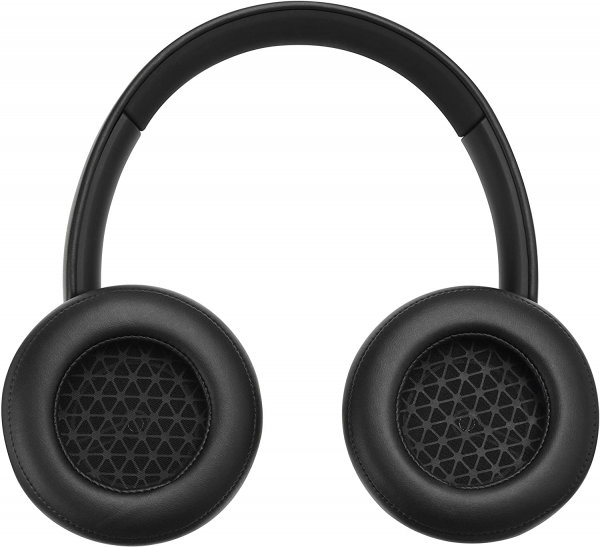
Ergonomics
Dali did not take a huge risk in design and design for his first Bluetooth headset. The IO-6 opts for very rounded lines and a particularly visible logo: a combination which is reminiscent of helmets from B&O, another Danish manufacturer… Everyone is free to appreciate this choice. In any case, the quality of manufacturing and finishes clearly appear to be there. We find a combination of plastic, metal and imitation leather on this helmet. During our test period of around three weeks, we did not detect any internal or cosmetic defects. Dali indicates that his helmet is IP53 certified, enough to resist rain drops a little better.
Even if its very rounded design is not the most ergonomic there is, the IO-6 offers good feelings of comfort. The headset easily finds its place on both small and large heads, thanks to the sufficiently large deployment of the headband and the generous orientation of the over-ear atria on the horizontal and vertical axes. The rounded shape of the latter does not follow the flag as naturally as the ovoid atria of certain models such as the Sony WH-1000XM3. However, there is a minimum of space in width and depth so as not to feel significant discomfort over long sessions of use. Memory foam pads provide a soft touch. There is no significant pinching effect.
All things considered, the rubber cushion of the headband is the “weakest” link in the wearing experience. We would have indeed liked a slightly wider and soft point of contact on the top of the skull. The weight of the helmet fortunately remains well distributed on the head. We have never felt significant discomfort on this side, but some competing models really know how to be forgotten from the first seconds of use, which is not completely the case with the IO-6.
For his first essay on the subject, Dali made an atypical choice with regard to orders. The metal plate with the manufacturer's logo on the right atrium conceals a large physical button. This is assigned to the usual controls for managing music playback, calls, navigation between tracks and triggering the voice assistant on the smartphone. There is therefore great ease of access for these commands, at the cost of a noise that is not the most pleasant with each activation. The volume is managed by two buttons also hidden just below and above the metal plate. After a few sessions of use, we end up identifying them quickly and easily.
The monostable switch allows you to switch on the headset or force pairing via Bluetooth. A last little button, not easy to access, is integrated to switch between active noise reduction / passive isolation and listening to surrounding noise (called "Transparency" by the manufacturer). We greatly appreciate the numerous vocal indications to precisely guide the user: too bad they are only in English. Some light indications, relatively complete elsewhere, are also in the game. We lack nothing.
The IO-6 works mainly wirelessly via Bluetooth 5.0 (compatibility with SBC, AAC, aptX and aptX HD codecs). It can also be used wired by mini-jack, and even USB on computer. The only thing missing is the Bluetooth multipoint connection: you can only connect one device wirelessly at a time. Regarding communication latency, the Dali IO-6 is not the best student there is, even if we still manage to correctly view videos on certain applications on smartphones (Netflix, YouTube, Amazon Prime Video…). Apart from this case, there is too great a discrepancy between the image and the sound. It is therefore necessary to go through the wired connection. There is no companion smartphone application offered with this headset, simplicity is essential.
Dali promises autonomy of up to 30 hours in wireless use. This is indeed the case when the active noise reduction is not engaged. With this last feature constantly activated, we found a duration of use oscillating between 20 and 21 h in the best of cases, which is a good result. Although this does not drastically change things in use, it should be noted that some direct competitors do better (36 h for the Elite 85 h, 35 h for the PX7, 23 h for the WH-1000XM3…).
The on-board microphone for the hands-free kit function unfortunately offers poor voice capture quality. Indeed, it quickly finds its limits outdoors and in moderately noisy environments. It is therefore very difficult to be understood by our interlocutor as our voice is muffled by the noises around, the wind, or worse, both. To make matters worse, certain syllables and end of sentences are sometimes "chewed". Only in a quiet room can you converse in good conditions.
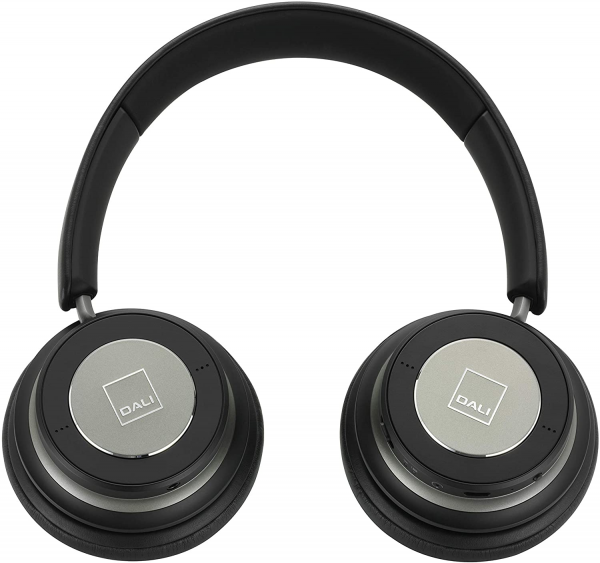
Audio
Like many Bluetooth headsets with the Active Noise Reduction (RBA) function, the Dali IO-6 offers a variable listening experience depending on the connection method and whether or not this function is activated. In the best of cases (spoiler alert: in wireless use), these headphones are distinguished by the excellent extension of their frequency response and the linearity of the latter on the first part of the spectrum.
Neutrality is clearly required from low extremes to high mids. The IO-6 shows a very good balance, the timbres are generally well respected, each frequency band and each source is in place. The very linear bass response may surprise you at first listen when active noise reduction is not engaged (the bass bass seems timid, the bass “dry”). Conversely, this is not the case, since the triggering of the RBA is accompanied by a slight highlighting of the serious extremes which flatters listening a little more and makes it possible to have a more sustained seat as well as '' better bass immersion.
In addition, it makes up a little for the lack of effectiveness of the active noise reduction in this area (the noises in the lower frequencies are a little better masked by the sound rendering of the headphones), but we come back to this in detail a little further. In any case, the bass is very detailed and punchy. We feel some small limits of readability in the extreme extremes on some demanding mixes and songs (many sources and / or very close attacks), but nothing unacceptable.
The behavior of the headphones in the high mid / treble (between 4 and 8 kHz) is not faultless. The reproduction of this area is quite uneven, resulting in an aspect that is sometimes too dull on many sources. The feeling of presence and definition in this area is clearly not as striking as on some other competitors, such as the WH-1000XM3. This can be seen very well on the voices, but also on the guitars, the piano, the violin or even the saxophone. The contrast with the peak around 8 kHz (which is still less impressive than what the curve might suggest) also accentuates the brightness of the treble. The metallic side of the cymbals and the whistling voices are heard more than usual. On the other hand, the beautiful extension in the higher frequencies offers a very good feeling of air and allows to easily perceive the effects of reverberation and certain discrete elements. The dynamics and the sound scene are faithfully reproduced. However, there is a settlement of the latter in terms of depth.
The IO-6 reveals a completely different face when used in passive mode (headphones off). Indeed, the sound experience is clearly less good because of a very colorful sound reproduction and the huge decline of the high mids. The sound is very dull and the voices are particularly nasal. Suffice to say that you must keep the headphones on if you want to keep the listening pleasure.
In the field of active noise reduction, the IO-6 lags far behind these rivals. The sounds in the low frequencies (rolling noise, motors, ventilation) are not attenuated very much, and you can quickly feel the limits of this function when there are conversations nearby. Even if the feeling of proximity of the voices is attenuated, they remain identifiable and sometimes understandable if one places oneself at a very reasonable listening volume: difficult to really put oneself in one's bubble in very noisy places. This at least has the advantage of greatly limiting the "valve" effect which can disturb some people. Note also that the on-board microphones are a little too sensitive to wind. The breath will therefore be audible from time to time depending on the situation, which is far from being very pleasant. The listening mode of the surrounding noises, also called "Transparency" by the manufacturer, is not particularly distinguished either. It helps to perceive a little bit better what is going on around us, but we still feel a lot the passive isolation of the helmet. In addition, activating this mode does not decrease the listening volume and does not interrupt the current reading: as long as the listening level is a little too high or there is wind (the note on the sensitivity of microphones to the wind applies even more in this mode), it is much faster and natural to remove the headphones to hear an announcement or what is happening around us.
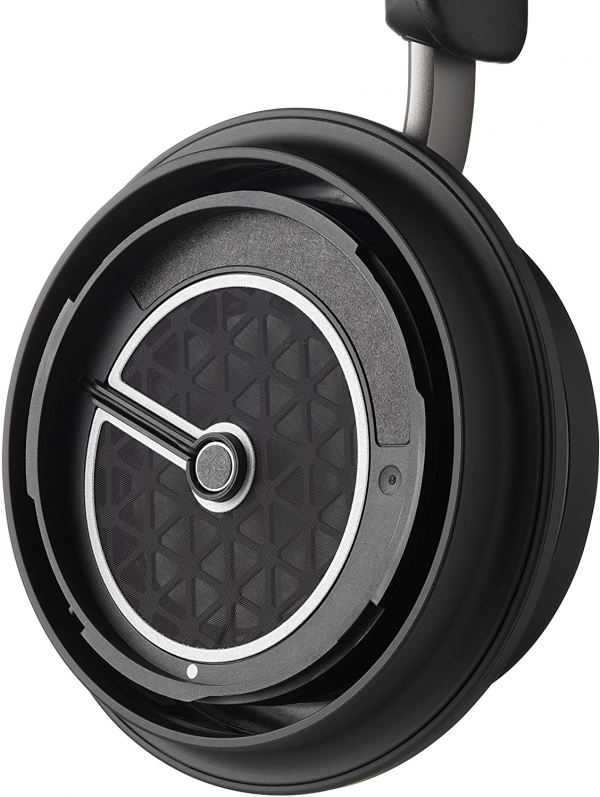
Conclusion
Dali successfully enters the world of active noise canceling Bluetooth headphones. The IO-6 offers everything you would expect from a good headset: good feelings of comfort, a complete and intuitive user experience as well as solid sound performance. That said, the tenors of the genre are still a good step ahead on all these points, especially on the side of active noise reduction. The Sony WH-1000XM3, the real benchmark, or its closest challengers, the Bose Headphones 700 and the Jabra Elite 85h, are the best choices.
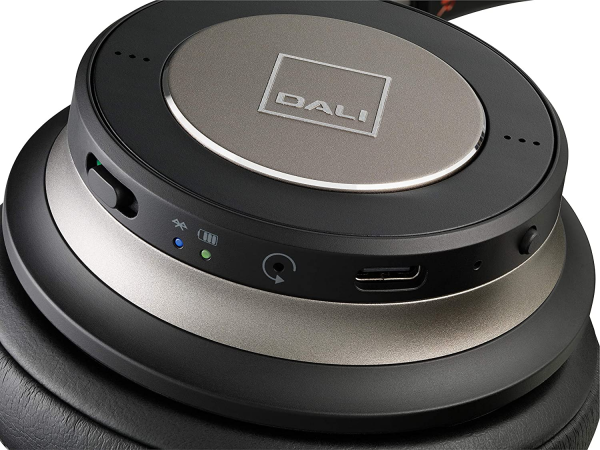
Reviews

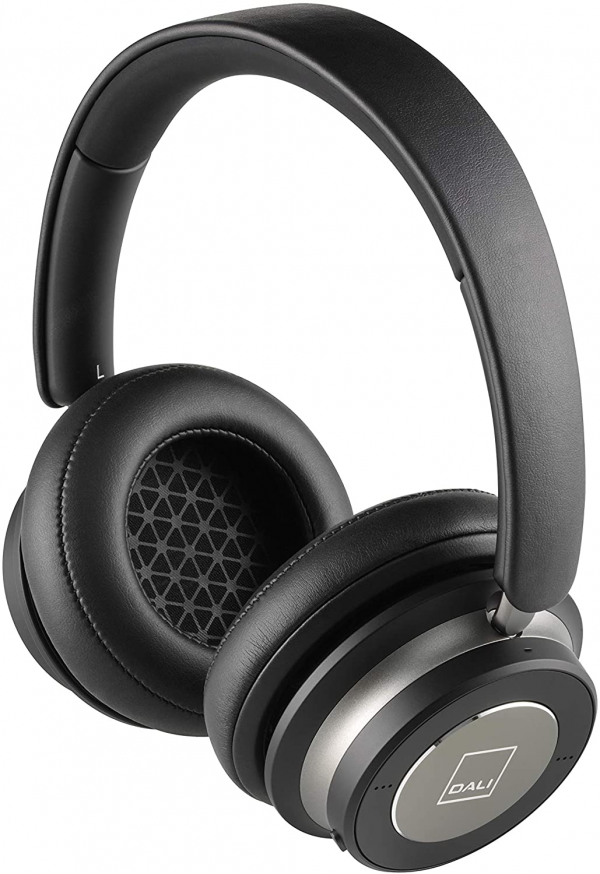
Epic sound quality
Initial impressions (day 0):
Build:
Build quality, despite being predominantly plastic, still feels better than the Audeze Mobius. It also sits comfortably on my head. I've been wearing for a couple hours now and don't have any headphone fatigue. I love the fact that these actually fold down appropriately enough to fit in my briefcase. I can't say the same for the Mobius.
Sound Quality:
The sound quality is great, separation is spot on. Listening to Yeasayer's "Sunrise" (FLAC ripped from CD), wired into a Plenue D2 you can hear the separation of the claps at the beginning very clearly and the intro drums aren't muddled against the baseline.
I've also wired these into an Oppo HA-2 and listened to Kanye's "Love Lockdown", Nelly Furtado's "Say It Right" and Future / Drake's "Life Is Good". As far as I can tell, the songs with heavy hitting bass are accurately represented. In fairness, I'm not a bass head, but I enjoy the how the bass hits without drowning everything else out. For Bassheads ymmv.
So far, I've been impressed by the sound quality, even when doing an AB with my LCD2s.
Headset:
The mics are a blessing and a curse, in speaking with people my voice came through clearly for phone calls. Unfortunately though, they also pick up everything else. If you are on a meeting, and are typing, people on the other end will hear you along with any other background noise you have going on. I deducted a star for this (I mean, Apple uses dual mics to hone in on voice to clear out background noise, this thing having 6 mics - and for the price - I would have expected some sort of technology employed to help with that).
Granted, there's no boom mic, which also makes it a little unfair to compare to the Mobius. That being said, I really wouldn't suggest these for gaming or meetings unless you are already in a fairly quiet space. I would suggest to DALI to add the ability to attach a boom mic for this purpose.
Active Noise Cancelling:
I'm using at home in a fairly quiet room already, so I'll have to take these on the bus and see. I couldn't notice much of a difference as of yet. Stay tuned ...
Bluetooth:
Still waiting on my aptX enabled DAP to arrive. Stay tuned ...
Great headphones!
After much research I decided to give these headphones a try. I have a number of Grado phones and a set of B&O (H6) but really wanted a Bluetooth, ANR headphones for the office, and for travel. Overall, I am very happy with these and will definitely be keeping them. A few observations and comments:
The sound is simply amazing. Great soundstage, clear, smooth mids and highs and smooth, tight bass. These are not bass heavy or boomy by any means, and might be too bass-light for some. I do boost the bass on my EQ just a touch. Note that poorly engineered audio shows poorly, but well engineered audio is awesome. I would categorize the sound as "relaxed".
The ANC works, but is not as strong as other headphones I tried (Bose & B&O H93rd gen). I can still hear some things going on around me, but they do take out the low-hum of air conditioners and road noise. The strong advantage though, is there is much less sound pressure when the ANR is turned on. The other headphones gave me headaches, or even made my eyes water when the ANR is on. I am doing my first commercial flight shortly and will be interested to see how they perform.
As for fit, it took a few hours to get used to how they feel, and now I find them very comfortable. They're heavier than the others, but sit comfortably on my head and my ears fit comfortably inside. My only complaint is that with my glasses on the passive, and maybe even a bit of the ANR sound cancelling is diminished.
Areas for improvement:
Better options around transparency mode (pause the music!), Ability to tweak the EQ, dual bluetooth connections
Edit: Mar 3, 2020
I used these on a commercial flight last week and have mixed thoughts. They worked great, sounded great, but I had more background and "general airplane noise" than I would have liked. When I would slide a phone off to see how they were, I was shocked at how loud the plane was. So I guess they were better than I thought, but I didn't feel like I was in my own quiet environment. Still overall very pleased with the phones and use them for hours each day.
Calidad de sonido insuperable para un auricular Wireless
He tenido antes otros auriculares Wireless (Sony, Bowers & Wilkins) y la calidad de sonido de los Dali es por lejos la mejor de todos. The amplitude, los altos, bajos y medios, la separación de los instrumentsos, sencillamente excepcional. El blocko de sonido pasivo es también el mejor dentro de las alternativas que hay en el mercado aunque aún no pude probar con más exigencia (en un vuelo por ejemplo) el ANC. Respecto al comfort, gratamente sorprendido, había leído algunos comentarios que me hacían dudar sobre este punto pero me he encontrado con una comodidad mucho mejor que, por ejemplo, los Bowers.